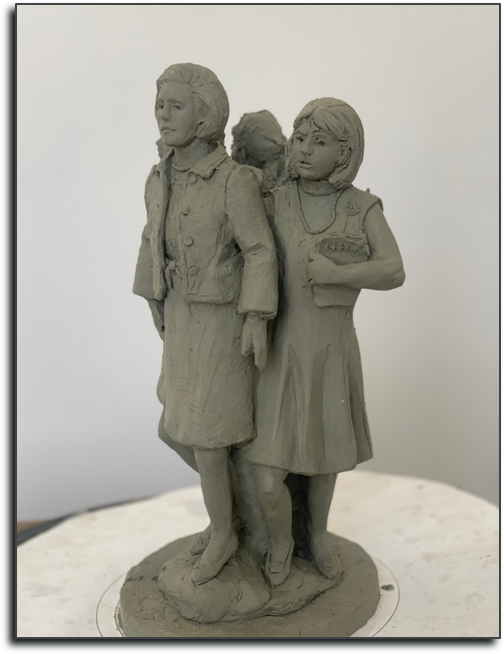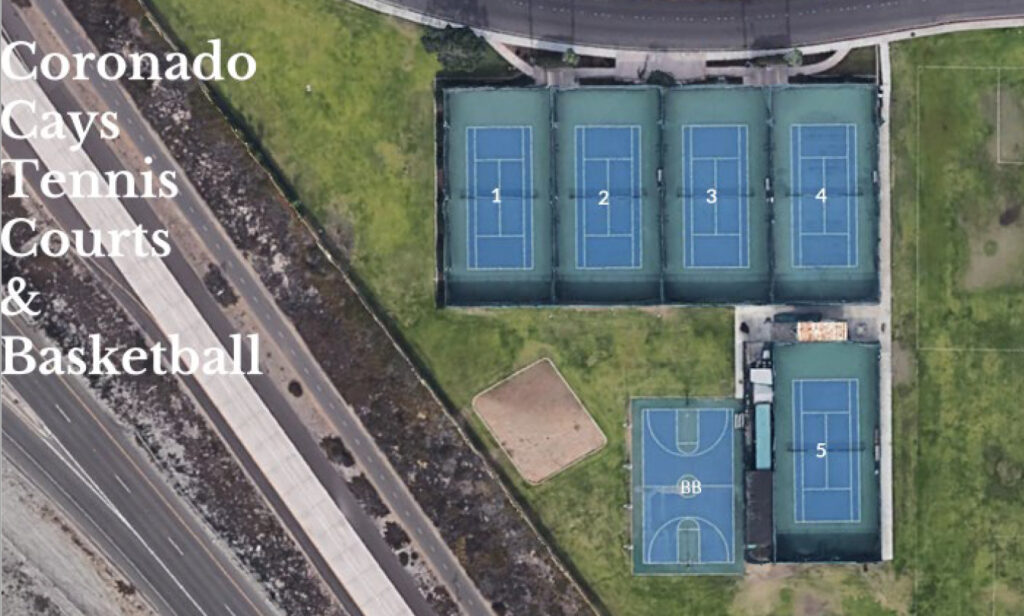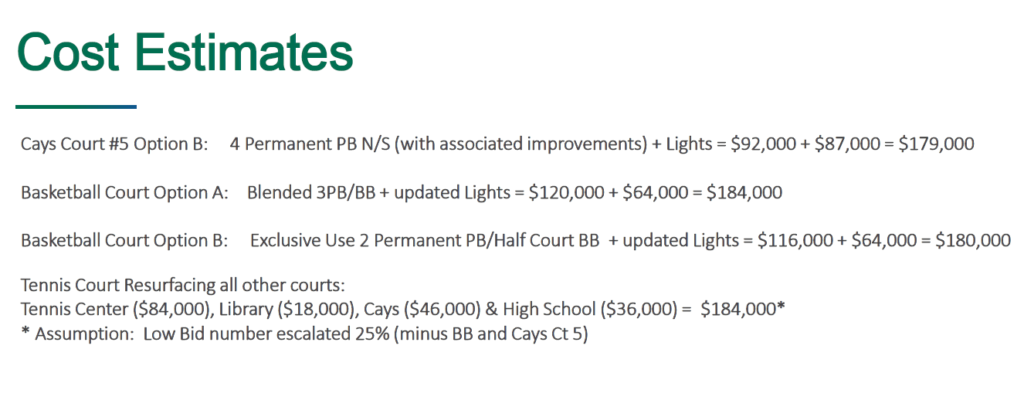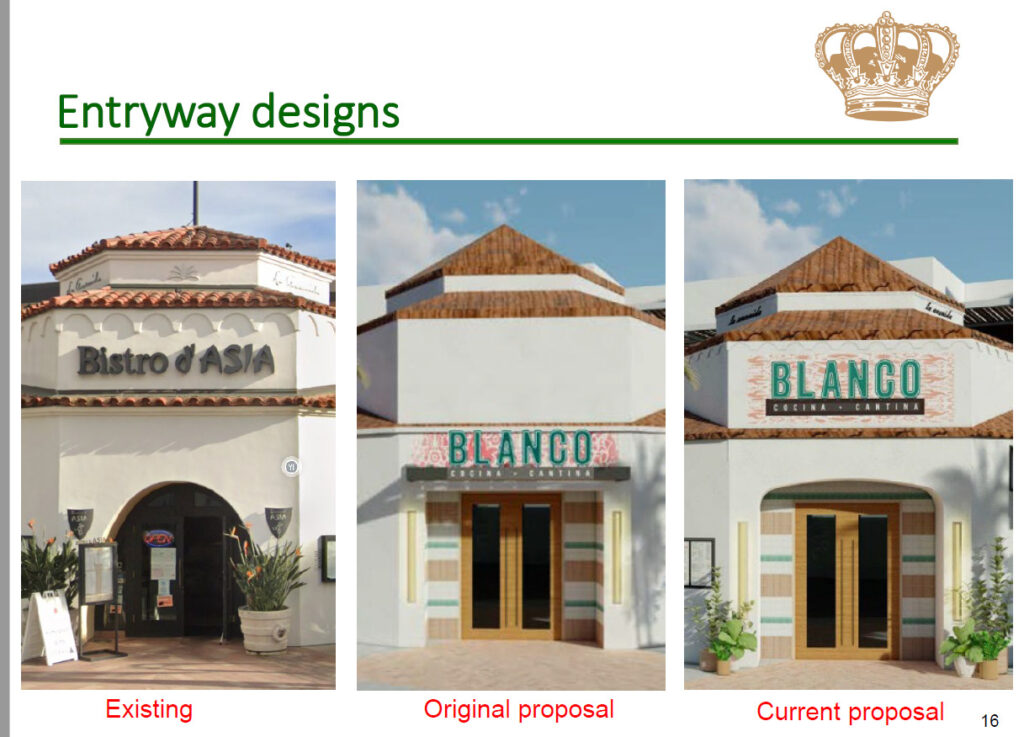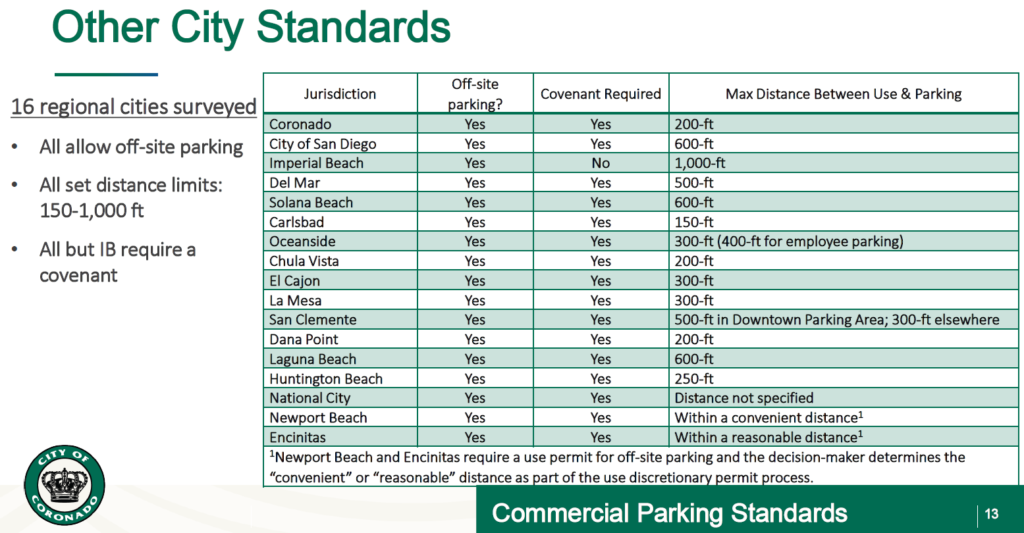
A full agenda made for a long July 19 Coronado City Council meeting, which included approving the League of Wives commemorative sculpture, honoring Parks and Recreation month, determining short term pickleball and tennis court allocations, approving a new Blanco design, reviewing downtown parking standards, and appointing commission members. City Clerk Jennifer Ekblad implemented a new approach for public speakers, asking them to fill out a form if they wanted to comment on an agenda item.
Senior Management Analyst Kelly Purvis introduced the League of Wives bronze sculpture project and then Foundation Chairperson Alexia Palacios-Peters gave background via Zoom. Foundation Co-Chair Christina Bagaglio Slentz detailed the creation of the League of Wives Memorial Project (LWMP), which will honor Sybil Stockdale and the tremendous work that she and the League of Wives did to help secure the release of those imprisoned in Vietnam. The bronze statue was designed with input from a design committee of local and military community members, including consultation with Sybil Stockdale’s sons, Sid and Taylor. It will stand 6 foot, 5 inches and weigh approximately 1,000 pounds, with a likeness of Sybil, as the leader, and three other women representing the community who supported the national effort, with a space left in the back for the viewer to feel part of the group, creating 360 degree visual interest. The plaque contains touching verbiage from the lens of a military spouse. LWMP is raising $343,000 for the cost of the statue and asking the city to foot the $75,000 installation costs. The group considered many sites around Coronado and came up with three suggested sites for the statue: one at the Coronado Public Library and two options at Star Park Circle.
Several community members spoke in support of the statue, and the mayor and Councilmembers Sandke, Tanaka, and Heinze praised the foundation for their amazing work on this, voting to approve the project, with the installation cost of up to $100,000, and tentatively accept the Star Park (A) location. Councilmember Heinze did ask staff and the Cultural Arts Commission to research a more prominent location, so that more residents and visitors can learn about this incredible legacy. Councilmember Donovan expressed his support of Sybil Stockdale and the League of Wives but felt that there are many other prominent leaders in Coronado history, and this could set a precedent for life size statues in a town where space is limited. He noted the existing commemorative Stockdale plaque at the library and felt a smaller scale would fit better in Coronado, while this larger statue would be more suitable placed in Washington D.C. Donovan abstained from the vote.
July was honored as Parks and Recreation Month as Mayor Bailey presented a proclamation to Interim Parks and Recreation Director Ellie Oppenheim, who made a point to acknowledge Coach Melinda Everett and her jump rope camp participants who were in the back of the room, and she noted the many great programs offered.
Most parks and recreation activities positively impact the health of our community, including the Coronado Golf course, one of the most popular and well-run golf courses in California; the City of Coronado summer camps, which saw a return to full capacity this summer; and the John D. Spreckels Center and Lawn Bowling Green which provides a place for adults of all ages to learn, engage, and celebrate through the many classes, events, and programs.
In the City Manager’s Report, Tina Friend thanked the Fourth of July committee, aka Coronado Fourth of July (CFoJ), and community for an outstanding holiday. She commented that she was “grinning ear to ear the whole day.” She also introduced new Assistant City Manager Tony Winney, who was selected after a nationwide search and comes with more than 20 years of experience in state and local governments. He has worked in San Diego County in Carlsbad, Vista, and National City and looks forward to helping spearhead community engagement.
Friend also gave an update on the beach water quality, noting that there has been a deluge of closures since the new testing began. She noted that when the old and new testing data was compared side by side, the results would not have indicated beach closures were needed, so she wondered about the equivalency of the testing methods. Coronado is currently working with Imperial Beach and the county with regards to these unforeseen outcomes. She said they are still trying to understand the county’s policy pivot that took effect on July 1, with the addition of a new warning tier of signs posted warning people to enter the water at their own risk. Mayor Bailey and Imperial Beach Mayor Dedina will be attending the County Board of Supervisors meeting to ask the county to return to the culture-based test and to better understand the new testing.
In regard to the ongoing Tijuana sewage issues, Friend reiterated that $300 million of the needed $600 million has been allocated to help expand treatment capacity in Tijuana and at the border. The EPA study is in progress and the hope is to break ground on projects early next year. The most recent EPA briefing was positive saying that Mexico has indicated that they will potentially provide financial contributions to help this decades old problem.
Once again, the pickleball and tennis players showed up in mass to rally for their sport, with 19 residents voicing their opinions, the majority willing to consider a compromise for the two popular sports. Many pointed out the difference in noise factors of tennis, which is a quiet, concentrating sport versus the noisier, more social pickleball game. Director of Public Services and Engineering Leon Firsht gave options for next steps in the Cays tennis and pickleball project. There was a survey conducted back in March where 726 people responded, and after the basketball court was considered as a pickleball court option, a survey was quickly conducted, with 104 responses citing the use of the basketball courts and the need for them to remain intact. From May through June, staff has been busy visiting the Cays courts, the Marriott facilities, and meeting with the Coronado Tennis Association (CTA), the Pickleball Association (PBA), and Impact Activities to solicit their opinions. They also obtained cost estimates, which are detailed in the table below, but are subject to change due to timing and scope of work.
While this originally started as a court resurfacing project, it has turned into a much discussed community issue and the councilmembers want to see it completed as soon as possible so suggested having it done in phases. It was noted that the costs continue to go up and contractor schedules are pushed out. There were nine contractors who came to look at the scope of resurfacing all the courts in Coronado and only two provided bids for the job.
There was a volley of motions going back and forth, which included noise barriers, which court would be used for what, and other variations, until one was finally approved, with three dedicated tennis courts in courts number 2, 3, and 4, and dedicated pickleball courts in courts number 1 and 5, with future plans for an additional pickleball court, so that court number 1 can be returned to a permanent tennis court. The lighting and basketball court will remain as is, but other options will be considered as the Cays Park Master Plan moves forward.
Senior Planner Jesse Brown presented the public hearing on the Design Review Commission (DRC) conditional approval of Blanco Cocina + Cantina at 1301 Orange Avenue. When this project was presented to DRC, owner Sam Fox was asked for an updated landscaping proposal and an archway over the front door, rather than the larger proposed square opening. He returned to council to seek approval for these items, with a new landscaping plan and a curved front opening. In the Orange Avenue Corridor Specific Plan, this La Avenida Spanish revival style building was designated as a role model building for the character standard of Coronado. Fox pointed out that the building has been changed through the years and the proposed arch was made wider to create a more accessible and welcoming entrance.
Mayor Bailey expressed that he thinks the new building sketches look great, and he always defers to the applicant, who knows what their customers’ needs are to be successful. Councilmember Heinze felt that even though the DRC had not approved the previous plan, Fox had updated it to what they had asked for. Councilmember Donovan was in favor of putting all three arches back in the front, but those were previously allowed to be removed and replaced with folding doors by the DRC. Councilmember Sandke was recused from this vote, because he has property nearby. Councilmember Tanaka took a different approach and said that he fully supports the DRC and felt it is in their purview to decide how best to keep it a role model building. He voted against this appeal.
It came down to a 2-2 vote and Mayor Bailey wanted the project to move forward, so he asked Councilmember Donovan if he would consider approving the project if Fox changed the front archway to style closer to resembling the original. The vote was 3-2, after Councilmember Donovan agreed when Brown said that the city could make sure this was done during the plan check phase.
Community Development Director Rich Grunow gave a presentation on commercial parking standards, which was continued from the May 17 meeting. He noted that parking is a complicated balancing act, especially with Coronado being a desirable visitor destination, with seasonal variations, with the goals of convenience for customers and employees, economic vitality, desirable urban design, and to prevent spillover into residential neighborhoods. Changes made to parking must be approved by the California Coastal Commission, whose top priorities are coastal access with abundant, convenient, and low-cost parking. Prior parking studies were conducted in 1976, 1980, 1993, and 2002, and in 2012 there was a commercial parking standards review, with a 200-foot limit, shared parking, valet, etc.
This issue is especially pressing with several development proposals on the 1300 block of Orange Avenue, including the Stake Chophouse & Bar expansion, the new Blanco restaurant, two golf cart rental businesses, and permanent outdoor dining areas in parking lots. All proposed off-site parking in the Bank of America building, but the owner is concerned with the covenant and the 200-foot limit, which is considered a “reasonable walking distance.” Coronado records 20-30 covenants a year, to ensure parking for exclusive use of business and legal protection.
City staff conducted a survey looking at 16 other comparable cities and found only one with a lower limit of 150-feet, and the rest with greater amounts, up to 1000-foot limits. Staff also looked at existing parking facilities in town including Bank of America, Hotel del Coronado, Union Bank, Vons, CA Plaza, and Coronado Beach Resort, and roughly estimated there are 162 surplus spaces, but that number would need to be confirmed.
Councilmembers agreed that transportation has changed dramatically since the standards were implemented, with more public transportation, bikes, and ride share companies among the options. Making changes to the parking codes is not an easy feat, because alterations would have to go to the California Coastal Commission, which takes 18-24 months, and aren’t usually approved, and often trigger a CEQA review.
David Spatafore of Blue Bridge Hospitality noted that this is a different time when parking is set by number of seats versus square footage in restaurants. He mentioned that the Bank of America building owner is willing to work with businesses. Matt Morton of the Brigantine and Miguel’s said that “outdoor dining has been a game changer” and he hopes it will become permanent.
Councilmember Tanaka said that the original wording was designed to restrict more restaurant development and create more retail businesses. He said this discussion was stopped in 2013, due to the fear of addressing the Coastal Commission. He proposed issuing a moratorium to change the 200-foot requirement, as well as parking across the street limitation, which wouldn’t require Coastal Commission approval. City Attorney Johanna Canlas said this would need to be evaluated.
Mayor Bailey pointed out that we have a “parking utilization problem, not parking availability issues.” He made a motion to direct staff to bring back options with policy and administrative changes to comprehensively address the parking underutilization. Staff can also look at how other coast cities have handled these issues. There was also a question of what the impact has been after the elimination of parking meters. This motion was unanimously approved.
There were three candidates for the Parks and Recreation Commission member to serve the remainder of a term expiring on January 31, 2024. Scott Crane was appointed by the council.
The Design Review Commission had four candidates for three open positions for three year terms expiring July 31, 2025. John Turpit, Christopher Kelly, and Edry Goot were appointed by the council.




